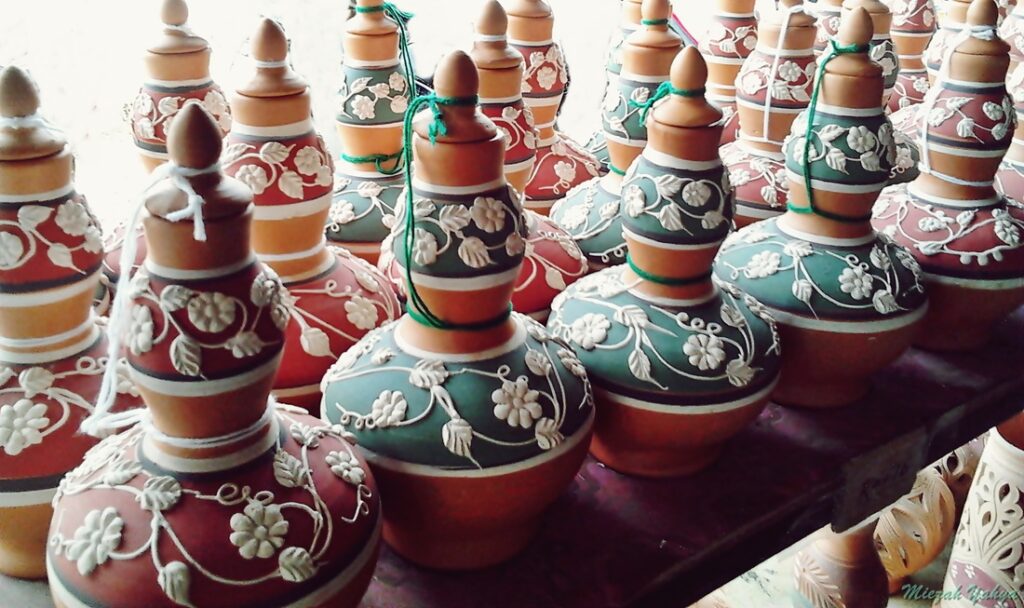
Labu Sayong is a traditional Malay pottery that originated from the town of Kuala Kangsar in Perak, Malaysia. The name “Labu Sayong” comes from the Malay words “labu,” meaning “gourd,” and “sayong,” meaning “dark,” which refers to the dark color of the pottery.
The craft of Labu Sayong pottery has been passed down through generations of artisans in Kuala Kangsar. The process of making these pots begins with the selection of clay from nearby rivers, which is then mixed with water and left to soak for several days. The clay is then kneaded and shaped into the desired form using a traditional wooden tool called a “kentong.”
One of the unique features of Labu Sayong pottery is that it is fired without a glaze, which gives it its dark color and distinctive texture. The pots are then placed in a traditional kiln and fired at high temperatures for several hours.
Labu Sayong pottery has a wide range of uses, from storing water and cooking to serving as decorative pieces. The traditional design of the pottery is typically simple and elegant, featuring geometric patterns and floral motifs.
In recent years, there has been a resurgence of interest in traditional crafts like Labu Sayong pottery, and efforts have been made to promote and preserve this cultural heritage. The local government in Kuala Kangsar has established a training center for young artisans to learn the craft, and a number of exhibitions and competitions have been held to showcase the work of the potters.
Despite the challenges of preserving traditional crafts in the face of modern technology and mass production, the artisans of Labu Sayong pottery in Kuala Kangsar continue to produce beautiful and functional pieces that reflect the rich cultural heritage of Malaysia.








